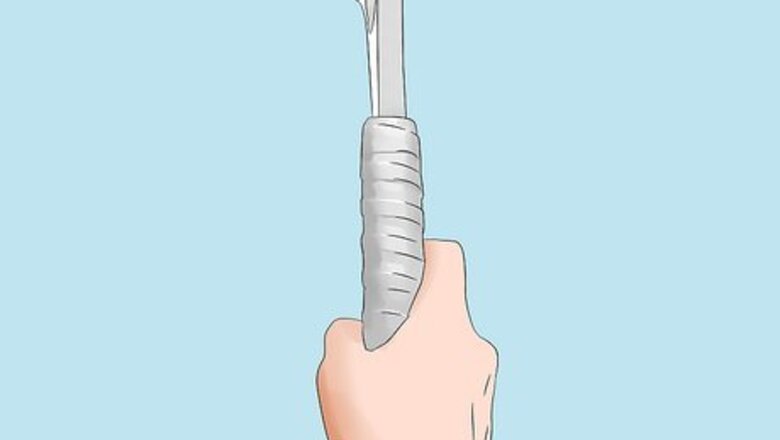
views
Slicing the Ball
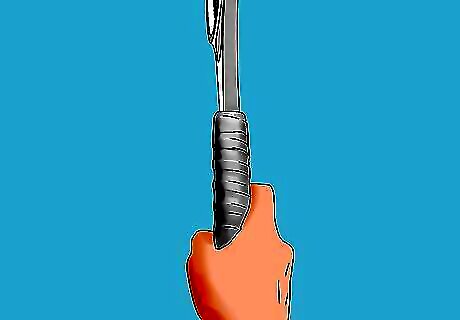
Use a continental grip to hold the racket. With this grip, the tennis racket angle is neutral and the frame of the racket is perpendicular to the ground when you hold it in front of you. As a right handed-player, put the pad of your index finger’s bottom knuckle against the second bevel of the handle and wrap your other fingers around the handle. If you’re left-handed, put your index finger’s bottom knuckle around the eighth bevel instead of the second. Professionally, this grip is largely only used for hitting slices, volleys, serves, and overheads. Rackets come in different grip sizes, ranging from 4 1/8 to 4 ¾ inches. They are called G1 – G5 in Europe. These reflect the different sizes of the player's hands. If you have a doubt, ask at your local shop. If you select too small a grip, it could affect your ability to play the game and may even cause a tennis elbow.
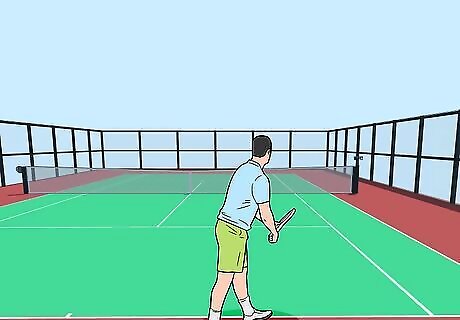
Use the net posts as points of reference to angle your body. Turn to face the right net post if you’re right-handed, or the left net post if you’re left-handed. Then coil your upper body so your shoulders are facing the net directly to complete the stance.
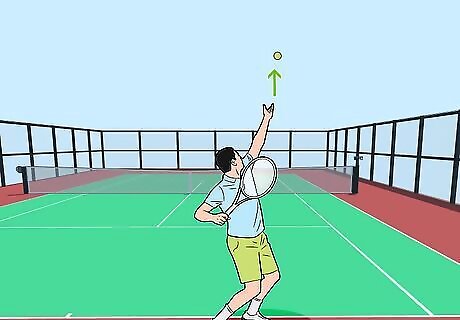
Toss the ball high and slightly to the side with your non-dominant hand. Hold the ball near the tips of your fingers and toss it above your head so you have the height to get it over the net. If you’re right-handed, toss the ball slightly to the right (and vice versa if you’re left-handed). A high toss also disguises your serve and makes it harder for your opponent to predict your move. When you’re first learning this serve, really exaggerate how far to the side you toss the ball. This forces you to learn how to hit a serve from the side.
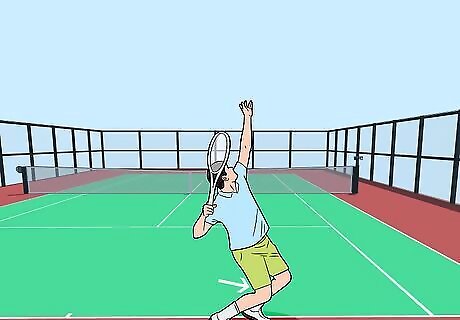
Bend your knees and coil your body while the ball is in the air. Turn your shoulders toward the back of the court, rotating about 45 degrees. Keep your hips steady while you simultaneously bend your knees. If you’re right-handed, slide your right foot slightly to the right (or your left foot to the left if you’re left-handed). This aligns your body and widens the serve.
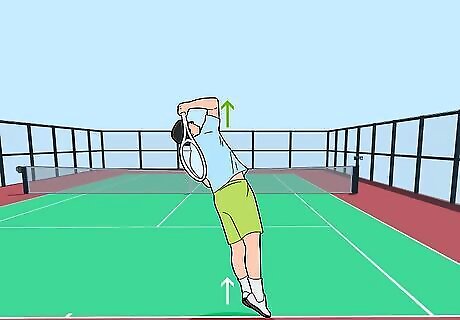
Raise your arm to prepare to swing. First, angle your upper arm in front of you with your elbow bent more than 90 degrees in (like at the top of a dumbbell lift). Keep your wrist relaxed and let the racket head drop so it’s pointing toward the ground. Begin swinging forward with the racket moving edge-first toward the ball. Keep this angle until you swing right (or left). Uncoil your upper body as you begin to swing so that your shoulders begin to face your target.
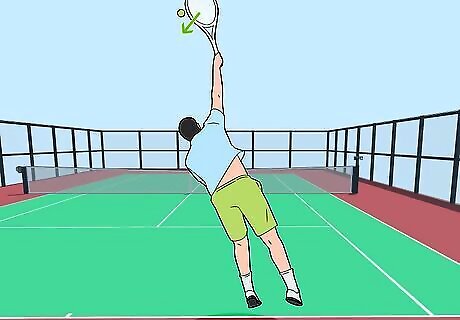
Hit the outside of the ball, slicing around and slightly under the ball. Keep the racket edge-first toward the ball as you straighten your elbow. As you pick up speed, turn your arm slightly so the racket angle faces the ball. Your arm should be almost fully extended when you make contact with the ball. Visualize your swing moving from high to low as you slice slightly under the ball.
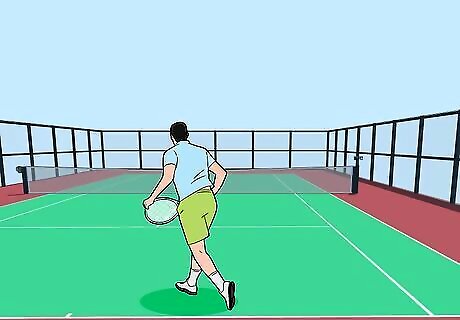
Follow through with forward momentum. Keep the edge of the racket moving forward after you strike the ball, trying not to pronate (twist your wrist and forearm) much. Rotate your shoulders so your body is facing your target directly (facing straight forward makes it harder to steer the ball to the side). Too much pronation will make you hit the ball flatly. Keep your wrist steady and maintain a chopping motion with the racket as you follow through.
Slice Serve Drills
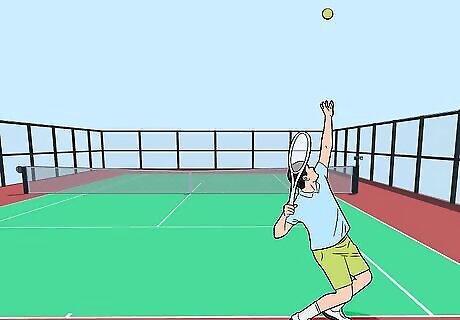
Practice widening your serve angle to slice the ball out wide. Begin by serving far away from the centerline—this gives you lots of court to play with and makes it easier to hit your target with a natural angle. Work your way closer to the centerline until you’re successfully serving 2 feet (0.61 m) from the line. Only serve from far off the centerline for practice. In a match, a serve from that position gives your opponent a large space to counter your serve with.
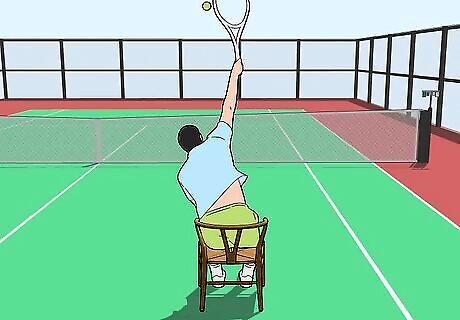
Practice in the “magic chair” to work on increasing your serve’s height. Place a chair near the net and sit down to serve. Shorten your grip on the racket and slice the ball over the net. Repeat this drill tog et more comfortable driving the ball upward as well as curving it to the side. As you get more comfortable, move your grip further down the racket handle and move the chair back toward the baseline. Serena Williams Serena Williams, Professional Tennis Player Strive for continuous self-improvement. "I'm a perfectionist. I'm pretty much insatiable. I feel there's so many things I can improve on."
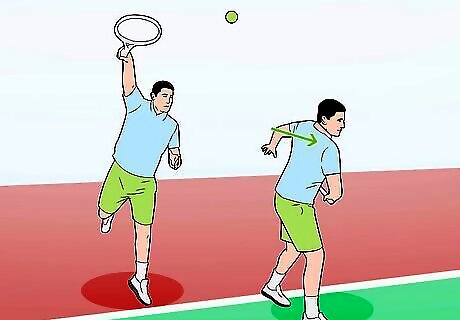
Exaggerate the twist of your shoulder during your follow-through. Begin the serve as normal, but aim to curve the ball as much as possible. As you uncoil your shoulders, twist so your dominant shoulder is facing the net rather than your “target.” This drill helps open up your body and practice getting the right angle for curving wide slices.



















Comments
0 comment